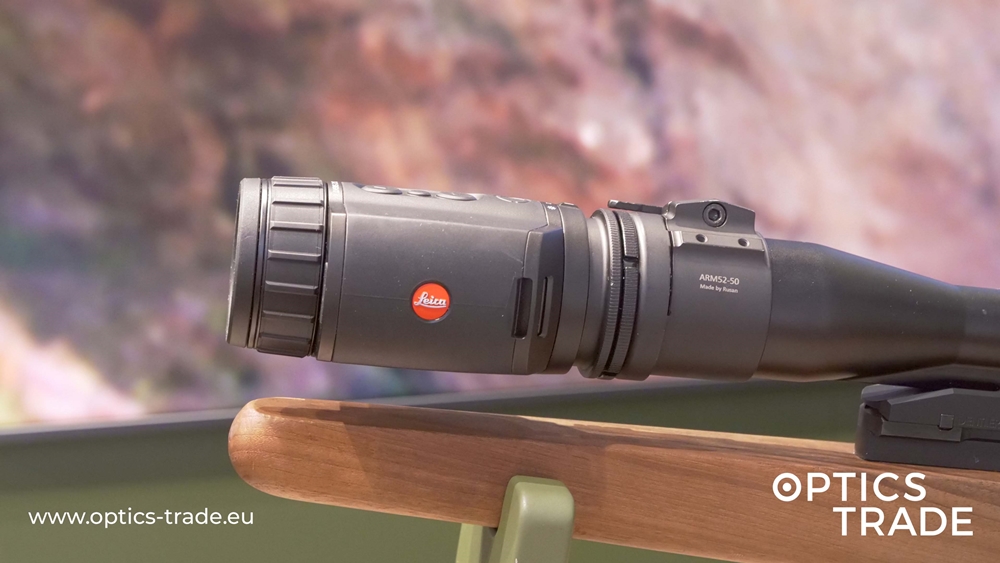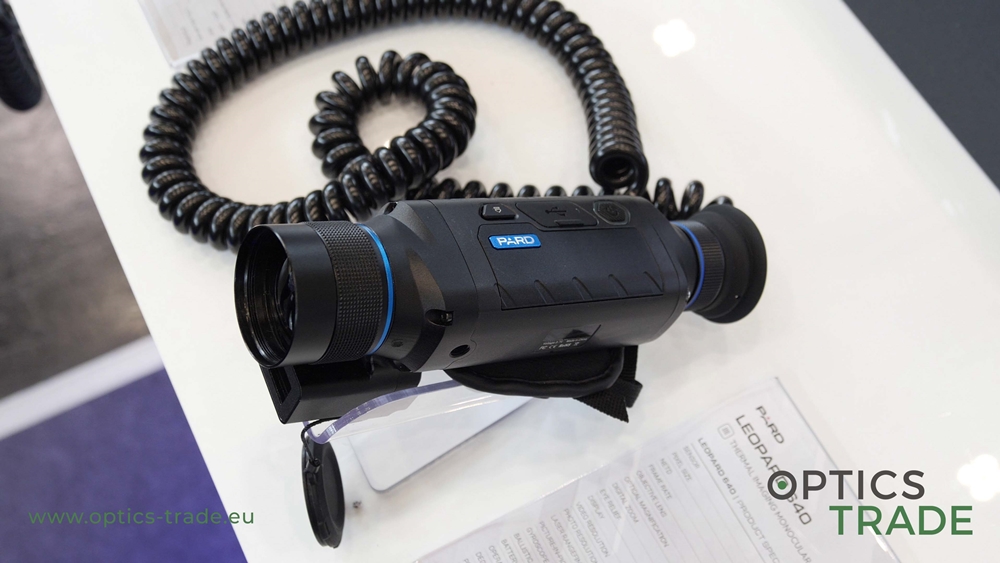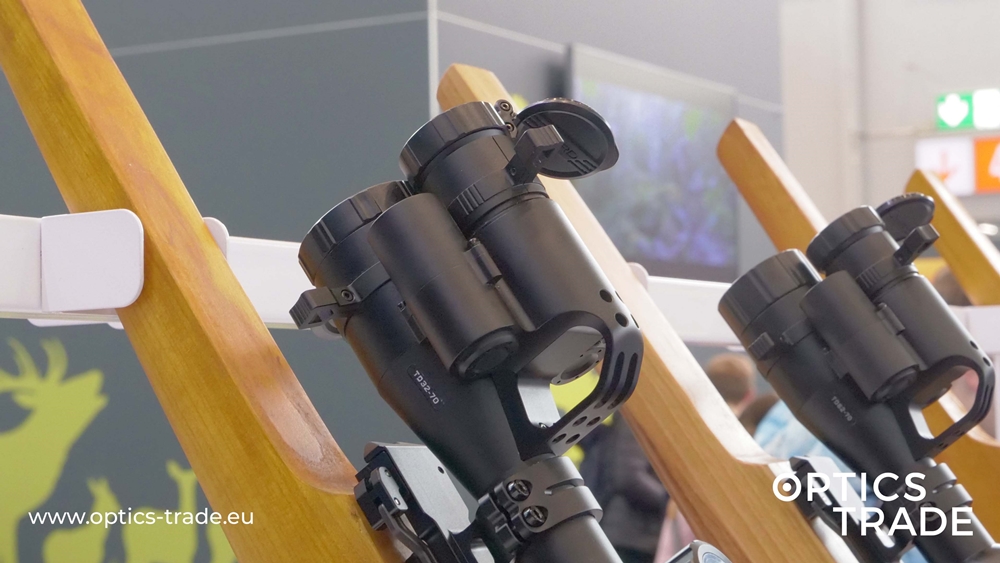Welcome to another episode of Optics Trade Debates. We have the privilege of discussing the differences between Pulsar Proton and Pulsar Core thermal clip-ons.
Let us begin by comparing optical properties. The sensor resolution is the same on both devices, namely 384×288, which is the most common resolution on all thermal optical devices. The NETD (Noise equivalent temperature difference) has been improved on the Proton. On the Core, it is >60 millikelvins, and on the new Proton, it is >40 millikelvins – the details can be seen better, especially in harsh weather conditions.
When it comes to image rendering, there is a new function introduced on the Proton, called “image detail boost”. However, when you turn the device on for the first time, the function is disabled. So, if you wish to have the best possible image rendering, the user needs to enable this function in the menu. When you turn it on, you should expect the battery to drain a bit faster, but image details are highly improved. There is also a slightly better display resolution on the Proton (1024×768) in contrast to Core (640×480).
Pulsar Core has a 50 mm lens, and the new Pulsar Proton has a 30 mm lens, which is quite an interesting change. It has a fixed focus without any focusing rings, while the Core has a focusing ring on the objective lens. Pulsar wanted to make the device as small as possible, and as affordable as possible at the same time, and they succeeded.
There are no differences in pixel pitch: 17 μm in both cases. The refresh rate is also the same, namely 50 Hz, which results in an image without any interruptions. When comparing the two products in the field, the image quality is almost identical, the Proton features a bit wider field of view. When you look at the details, the two are on the same level, but the user gains much more with the lightweight and compact Proton.
There are big changes when it comes to the way the adapter is mounted. The new Proton has a thread for the new PSP adapter, even though we think the majority of people will use the reducing ring either from SmartClip or Rusan. All in all, the user is able to get the reducing rings to convert either the Bayonet (on the Core) or the thread (on the Proton) to a normal, standard thread on the adapters. When it comes to Proton and Krypton, the user can get a fixed or moving solution from SmartClip, where you can centre the display image in the centre of your daytime scope image – it does not affect the point of impact.
Both Core and Proton need to be zeroed before first use. For those who are not used to zeroing, zeroing the Proton is much easier than the Core. The bottom flat surface on Proton is an advantage because once you mount the optics on the adapter, the lowest part of the adapter becomes the lowest part of the whole construction.
Pulsar Proton is made of magnesium, and the whole built quality is much better than on the Core. Once Proton is mounted, the battery is on top, and the lens is in the optical access of the daytime scope. With the new device, the menu buttons are positioned on the side and no longer on the top, which is great.
What is also different, and a huge step forward for Proton is the difference between the batteries. Core used to have CR123A batteries, whereas the new Proton has the APS5 batteries, which have 5-6 hours of battery life. They are really affordable (about 45 €) and you get two of them when buying one device. This is something really useful when going out to the field, and the battery dies – the user can change it within a matter of seconds. The user also gets a charger that can charge two batteries at the same time.
Let us move to the differences regarding multimedia. Even though Pulsar Core remains a great device, it is a bit outdated nevertheless. Naturally, hunters want to share their best hunting moments with their hunting friends, and this is why the new Proton comes with both image capturing capabilities, as well as recording capabilities, both only one button away.
The device also features Wi-Fi connectivity, and the user can connect it to a smartphone app called Stream Vision, which is, at the beginning of 2021, the most sophisticated app on the market for digital night vision and thermal devices. The software on the Core cannot be upgraded, but on the Proton, the software can be upgraded in a blink of an eye. If the user is able to upgrade the device every couple of years, the device does not get outdated as quickly – and Pulsar is no stranger to upgrades.
Another advantage with Pulsar Proton is the colour modes. There are 8 colour modes: the most popular white hot and black hot, then there is red hot, red monochrome, etc. The colour mode choice depends on the situation you are in. With Core, there were only 2 colour modes, namely black hot and white-hot.
Price-wise, it is safe to say that the Core devices underwent a rollercoaster ride, which is understandable if a product has been on the market for such a long time. Pulsar keeps changing the market by making such products available to everyone. Because when it comes to thermal vision; with development, you get less expensive devices that are better in quality.
The Proton will be available in two options: with and without a monocular, and it will roughly be priced around 2.500 € – 2.700 €. The monocular on Core devices had to be removed before putting on the adapter. With the Proton, you get a monocular that goes directly on the Bayonet behind the thread, and you can use the monocular through the adaptors.
The warranty remains 3 years, but if we have learned anything from our experience, there are not many warranty claims with Pulsar, and the user can also send the device to be fixed after the warranty period has ended. All in all, such a small and lightweight thermal clip-on device with such great optical capabilities used to be impossible to imagine, but with Pulsar Proton, the impossible became possible.
With this, we came to an end of our debate. If we forgot something, please use the comments under the video, or write to us via e-mail. See you in our next debate!
Products mentioned in the Pulsar Proton vs Pulsar Core debate:
Pulsar Proton: https://www.optics-trade.eu/en/pulsar-proton-fxq30-thermal-imaging-front-attachment.html
Pulsar Core: https://www.optics-trade.eu/en/pulsar-core-fxq50-bw-thermal-imaging-clip-on-attachment.html
Follow us on social media:
Facebook: https://www.facebook.com/OpticsTrade/
Instagram: https://www.instagram.com/opticstrade.hunting/
Blog: http://optics-info.com/
Flickr: https://www.flickr.com/photos/opticstrade/albums
Pinterest: https://www.pinterest.co.uk/opticstradeeu/
LinkedIn: https://www.linkedin.com/company/optics-trade




